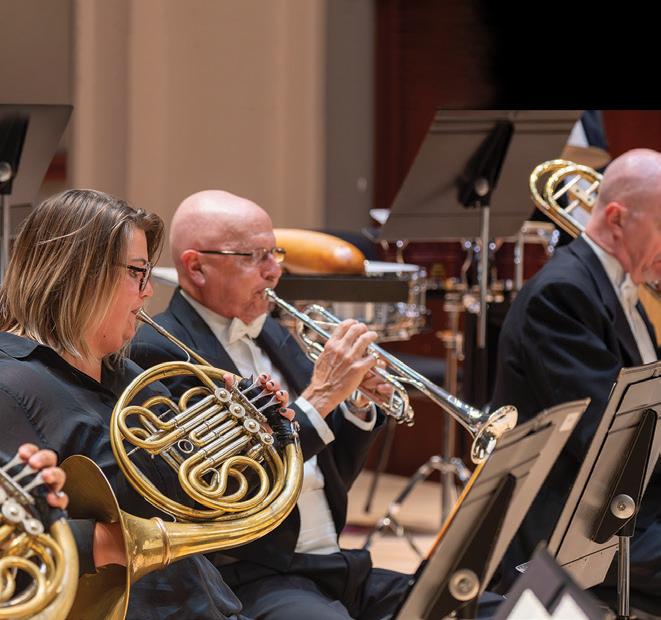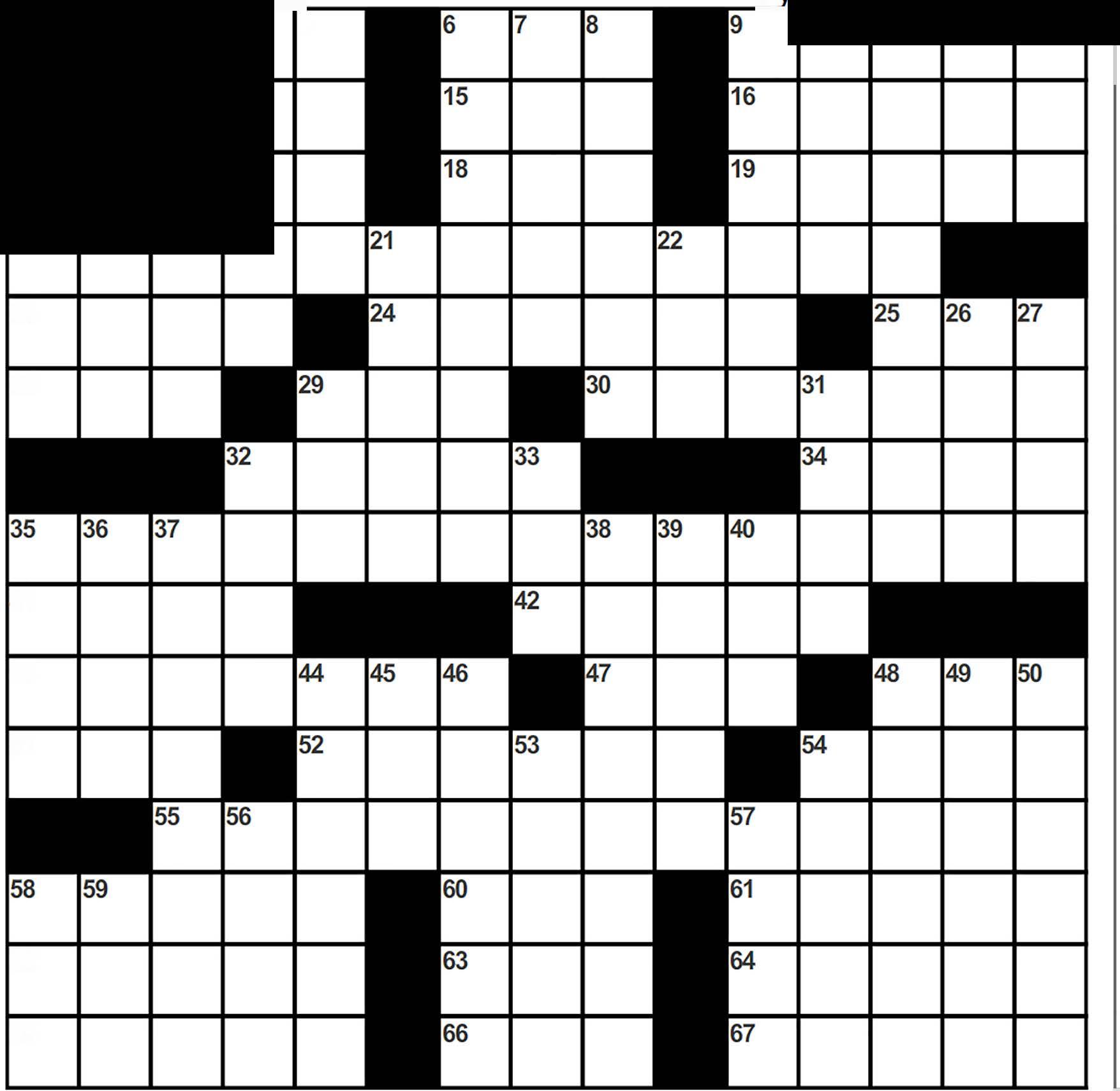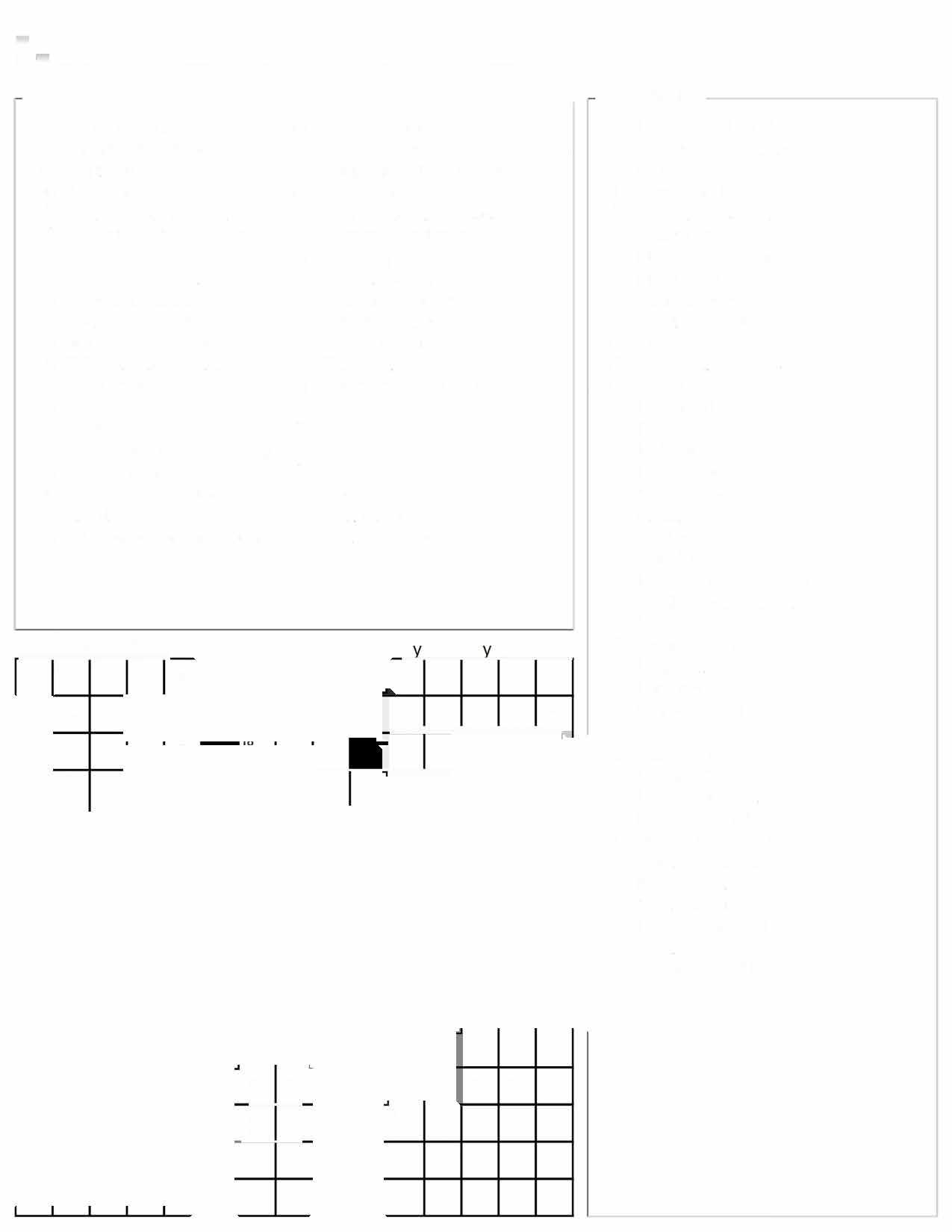AUGUST 2024
ASK THE EXPERT: ELDER ABUSE
Publisher: Amy Natt AmyN@aosnc.com
Editor-in-Chief: Amy Phariss Editor@outreachnc.com



Publisher: Amy Natt AmyN@aosnc.com
Editor-in-Chief: Amy Phariss Editor@outreachnc.com


At Aging Outreach Services, our team focuses on all things aging. We maintain a caregiver registry, so clients have access to fully vetted and qualified caregivers. We have referral specialists who help clients find the best fit for caregivers. We also have care managers who help clients identify their care needs, support them through transitions (medical, financial, family, legal, etc.) and offer expertise in aging related resources and issues so clients worry less and focus more on their dreams and goals. Care managers are the people who oversee a client’s overall needs. They connect with the client’s entire team of professionals and work alongside family members for the best client outcomes.
continued on page 5
Creative Director: Sarah McElroy Coalfeather Art & Design
Office & Marketing Coordinator: Anna Wiedholz AnnaW@aosnc.com
Marketing & Ad Sales: Emma Campbell EmmaC@aosnc.com
Well, it’s official: fall is here. I had my first pumpkin-spiced latte just ture dipped low enough to merit a fleece.
We’re on the downhill slope of summer. The days are hot and muggy. This month we’re sharing a few drink recipes for those of you who’d like a refreshing afternoon spritzer or mocktail. There are few things more refreshing than a quiet moment and cold beverage, even in the dead of summer.
Especially in the dead of summer.
This month’s feature looks at care management through a day in the life of a care manager lens. Ashley Winters, Referral Specialist at AOS Home Care, spent a day with Ashley Seace, an AOS Care Management Care Manager. Winters sheds light on what a care manager does, how they manage a busy client schedule and what some of the daily tasks and responsibilities fill their time. For anyone who has wondered what a care manager is and what they do, this feature will give you the inside scoop.
In Ask the Expert, AOS Home Care Management
Lead Care Manager Jennifer Tyner answers a reader’s question about elder abuse, explaining what it is, how it happens and how we can protect ourselves and our loved ones from multiple forms of abuse. Tyner explores financial, physical and emotional abuse as well as neglect and how it impacts seniors.


Don’t worry. It was decaf.
October is a gentle month. There are constant reminders of change. we are lucky, toward each other. We have lingering conversations over the flames flicker. Smoke dances around us in a circle. We zip our jackets
Protecting eye health is one of the most important aspects of aging well. This month, Carolina Eye Associates explains the major causes of vision loss and how to prevent it. Learn more about cataracts, glaucoma and macular degeneration and how to protect your vision from loss or decline.
In this month’s feature, we’re starting an important conversation: care community for ourselves or a loved one? Fox Hollow Senior Robin Hutchings offers inside perspective for making this decision.
In Ask the Expert, Amy Natt answers a reader’s question regarding away without any estate planning. Without a will or access to important
Finally, we explore a phrase or term we’ve all heard and often wonder what exactly it means: Sandwich Generation. What is it? How is it defined, and what are the effects of providing for others financially, physically, emotionally and spiritually?
Physical therapist Dr. Sara Morrison of Total Body Therapy and Wellness potential diagnostic tools used in physical therapy to help diagnose these tools differ from what other doctor’s offices may offer.
August 21st is National Senior Citizens Day, so we’ll celebrate with a quote from Ingrid Bergman, which seems fitting and….true!
I’m going to agree with Nathaniel Hawthorne this month, who wrote:
I cannot endure to waste anything so precious as autumnal sunshine spent almost all the daylight hours in the open air.
Getting older is like climbing a mountain; you get a little out of breath, but the view is much better !
facebook.com/agingoutreach/ instagram.com/agingoutreachservices/ Amy
Here’s to enjoying the October sunshine, falling leaves and daylight
Cheers!



Jennifer Tyner, AOS Care Management, Lead Care Manager | jennifert@aoscaremanagement.com
QUESTION: I recently read that at least 10% of older adults will experience elder abuse each year. I was shocked because I haven’t considered “elder abuse” at all. Now, as my parents are getting older and needing more help, I am worrying. What is elder abuse and how can I protect my parents?
Answer: There are several types of elder abuse but the one we see the most is financial abuse. There are many kinds of financial abuse. Some of the most common are:
• Scams, Fraud & Identity Theft (eg. government impersonation scams - a Medicare document will look like a payment but it’s actually a scam or grandparent scams – when someone calls and pretends to be your grandchild, requesting money)
• Pressure, Threats & Intimidation (eg. when someone tries to coerce or force someone to sign over ownership of assets or to make that person the beneficiary of a will)
• Theft (eg. stealing personal belongings, money, etc. – older persons with mental or physical disabilities are particularly at risk)
• Inheritance Impatience (eg. a family member asks for his/her inheritance early or pressures you to make purchases based on the expected inheritance)
• Improper Use of Funds (eg. your family member adds personal items to the grocery shopping or uses your funds to pay for their own bills/expenses)
• Abuse of Family Agreements (eg. when family members enter into agreements – often without legal backing – that may be abusive, such as splitting profits from the sale of a business or home)
There are ways you can protect yourself and a loved one from financial elder abuse. Make sure you have someone who can help them go through mail and decide what to pay and what is legitimate or not. You can have someone help you decide where to donate money and which organizations are legitimate. You need to be careful who to donate your money to. Once you make one donation, many more organizations will reach out. You need to be sure you’re managing your donations for your own security, financial and otherwise.
Make sure you have a Power of Attorney (POA) for when you may need help. A POA can help with healthcare decisions, real estate transactions,
government issues (taxes, social security, Medicare) and financial transactions. Your POA can help with managing bank accounts, monitoring investments and dealing with insurance claims legally on your behalf.
It’s a good idea to have someone you trust look through your finances occasionally, to look through and make sure you’re not mis-paying things, paying something twice, etc. This helps avoid scams. Financial advisors, planners, adult children, and family members are all people who can take on these roles. It depends, and every situation is different, but finding someone you trust is key.
Neglect tends to be the next elder abuse issue we see most often. Family estrangement plays into this, where the older adult doesn’t have the support system they need. They end up not initiating services (such as seeing doctors, finding in-home care or finding a financial advisor or CPA) or making sure their needs are met. They don’t know what to do, and they don’t have anyone to reach out to for help and support.
Physical abuse is rare; we don’t see that regularly. When we do see it, it typically happens between spouses. It’s not a stranger very often, like a care worker.
CARLOS MIGUEL PRIETO, MUSIC DIRECTOR
OWENS AUDITORIUM, BRADSHAW PERFORMING ARTS CENTER, PINEHURST
Beethoven
Symphony No. 8
THU, SEP 26, 2024 | 7:30PM
Joseph Peters, conductor
Farrenc: Symphony No. 3
Beethoven: Symphony No. 8
Beethoven Piano
Concerto No. 3
THU, NOV 14, 2024 | 7:30PM
Carlos Miguel Prieto, conductor
Stephen Hough, piano
Beethoven: Piano Concerto No. 3
Brahms: Symphony No.1



Holiday Pops

Dementia is a key element in elder abuse because it alters brain functioning and thinking processes. The person with dementia might be displaying certain behaviors, and the spouse may not know how to deal with it. Then frustrations increase. The well spouse is overwhelmed and stressed. They’re not handling the dementia symptoms well and become abusive. This might look like screaming and yelling or constantly arguing with the adult. The caregiver may also be trying to do reality orientation, which is trying to get the person with dementia to “see reality.” This doesn’t work with people with dementia. Frustration and stress increase, and caregivers can become verbally abusive.
Finding a support system is key for handling stress. Educating yourself is really important. What is causing the symptoms you find frustrating? Understanding the disease is key for enabling you to deal with it in a less stressful way. For example, a spouse may refuse to shave. The wife may want him to shave and insist on it. But in understanding the disease, you can look at the bigger picture: is he showered, is he safe, is he okay overall? If so, it may be fine if he has hair on his face.
THU, DEC 12, 2024 | 7:30PM
Celebrate the season with festive holiday favorites and your North Carolina Symphony.
Concert Sponsor: Aging Outreach Services
Mozart “Jupiter” Symphony

THU, APR 10, 2025 | 7:30PM
Mozart: Symphony No. 41, “Jupiter”
Education can be found at your doctor’s office, a local senior center or from an organization specializing in the disease your loved one lives with, such as the Dementia Alliance of North Carolina or the Alzheimer’s Association.
Local and online support groups are also wonderful resources for getting information and for connecting with others who are experiencing similar situations and frustration. Hiring a care manager can help, too. We can come in and assess your parents and make sure any care givers you hire are credentialed. You want to find someone who you can trust to be there and to care for your loved one patiently and appropriately.
As your parents age, you can help them by providing another set of eyes and ears. You can help them keep track of finances and, if needed, hire competent, trusted caregivers. It’s great you’re thinking of this now and are aware that abuse is a potential among seniors and happens every day. You can help protect your parents from experiencing abuse and support them in the coming decades.
A DAY IN THE LIFE OF AN
Ashley Winters, Referral Specialist, AOS At Home Care and Amy Phariss, Editor in Chief, OutreachNC
Last week, AOS At Home Care Referral Specialist Ashley Winters spent a day with AOS Care Management Care Manager Ashley Seace. Winters tagged along as Seace spent her day visiting clients, managing schedules and advocating for clients and their families. We asked Winters to give us a bird's-eye view into the daily life of a care manager so we can all better understand what care management is, what care managers do and why they’re such an important part of the aging puzzle.
This interview has been edited for length.
ONC: What does the care manager’s day start with?
Ashley Winters: I spent an entire day with care manager, Ashley Seace, to learn what a day is like as a care manager. We started our day promptly at 8am and hit the ground running visiting her clients. This included assessments, check-ins, organizing a client’s medication, and reviewing a client’s long-term care policy. On other days, Seace might consult with clients for potential care management services, accompany clients to medical appointments, and assist clients if a crisis arises. A crisis might be needing to go to
the hospital with a client for an emergency or setting up 24-hour care after a client is discharged from the hospital and unable to leave without care. We didn’t experience any urgent situations during our day, but Seace was organized, available, and always ready should any emergency arise.
One of the questions that stuck with me throughout my day with Seace was, “How does she manage it all?” So, I asked. Seace says, “Calendars. Calendars. And then more calendars. Seriously though, writing EVERYTHING down is the only way I can stay organized. I have to write it on my work calendar on my desk and in my personal agenda.”
ONC: What makes up most of the day? What is the typical schedule like for a care manager?
AW: Seace, who is always organized and in-tune with the needs of her clients, schedules her day to fit their needs. For Seace, this looks like three to four client visits per day. This does not include a potential crisis that may arise. Since the day will vary depending on clients’ needs, Seace will make frequent appearances at the AOS office, printing and faxing information for her clients, or attending educational meetings with the care management team, such as the ALCA conference or advance directives event. Throughout her day, Seace also offers emotional support, advocacy, and encouragement for clients as well as colleagues and jumps in to help clients with smaller tasks such as pain tracking and thoroughly checking food logs. No day is the same for Seace, which is one of the things she likes best about her work.
ONC: What is the most surprising aspect of a day of care management?
AW: I was surprised by how seamless everything went. Navigating a person’s life and touching just about every aspect of it isn’t easy. Much like anything worthwhile and successful, it usually takes time to hone. I was surprised at how Seace expertly handled difficult and stressful interactions.
I realized how much work goes into building the relationships so when things naturally hit a bump, it can be worked through.
Care management is a fluid job. You must be able to think on your feet and help clients do the same. I was surprised to see Seace able to do this without skipping a beat, while keeping on task and on schedule! I guess the surprise was just how many moving parts are involved in care management and how quickly everyone (clients and care mangers) has to shift according to life’s events.
ONC: What qualities or attributes did you see in Seace that make a good care manager?
AW: This is a great question. There are many qualities I think would make a good care manager, but three specific ones come to mind.
1. Compassion – We have to be compassionate towards the families we are working with because they are in vulnerable positions when they come to us.
2. Flexibility – We have to be quick on our feet and have the ability to change our days quickly.
3. Sense of humor – We need to be able to laugh off some of the situations because otherwise we risk internalizing things and that isn’t healthy for our clients or for us!
ONC: What was the best part of the day for the care manager? How about the hardest part of the day?
AW: The best part of the day for Seace was cheering alongside physical therapist Brooke Thomas, of Alpha Therapy, as they supported one of Seace’s client’s during her therapy session. Since Seace has been working with this client for some time, she was honored and thrilled to see her client go from completely bedbound to walking with assistance.
This turn around in mobility and physical health isn’t easy. Seace was proud witnessing her client’s hard work and their work together, consisting of many hours working with the client, her family, the caregivers, and other healthcare providers (such as Brooke, physical therapist). Working with other care providers is a bigger piece of the care puzzle than some may realize.
Care managers collaborate with doctors, pharmacists, and physical therapists and many other professionals to support clients in a holistic way.
A day in the life of a care manager can also be tough. I watched Seace navigate a challenging situation with one of her clients. The client was having a hard time accepting she was not where she once was cognitively speaking. The client became upset and frustrated, and Seace worked with her to identify her feelings and create a plan that worked for her client.
Navigating this situation is not for the faint of heart; it requires expertise in numerous areas of the aging process, trust and mutual respect, and compassion. Seace demonstrated all of these skills, and it was motivating to watch the client soften as she proved she was indeed capable of navigating her life and challenges. Seace compassionately held space for her client, allowing her client to express her feelings and concerns. Toward the end of this visit, Seace’s client expressed how grateful she was for her.
Winters asked Seace a few interview questions of her own. Here is what Seace has to say about her role as a care manager.
Winters: Ashley, you seem to navigate challenging situations really well. How did you learn to handle complicated or tough situations with clients?
Seace: Active listening is the skill I’ve learned that helps the most. I sometimes go into consults thinking I have all the answers ready and that’s what the client wants. Most of the time, they want someone to listen to them and their concerns first, then offer advice. I also have proven to them that I am someone they can trust by going out of my way to make things happen for my clients, being available to them both during the day and sometimes after hours and letting them see glimpses into my life (mostly just talking to them about my dog) so they know that the trust is mutual.
Winters: What has motivated you to become and continue to be a care manager?
Seace: I have always had a desire to help vulnerable populations whether that be children or adults. Being able to serve a population that is so vulnerable and doesn’t always know how to access various resources available to them is what drives me to do what I do. Having small wins, like getting an appointment with a provider or getting a long term insurance claim approved, helps me know that what I am doing is worth it. Winters: Where do you see care management in the future?
Seace: I could see care management becoming a bigger piece of healthcare in the future. I think we are doing a good job at spreading awareness of what this job entails, and more and more people are going to become interested in it. We are able to work with clients as much as the clients want and I think people are going to like the concierge style of care management, both as care managers and as clients.
We often hear the term “sandwich generation,” especially when it comes to caregiving. What does “sandwich generation” mean? What are the specifics about this group, and what unique challenges does this generation face? What are some of the myths we have about this group of Americans?
Definition (noun) The Sandwich Generation refers to “a generation of people who are caring for their aging parents while supporting their own children.”
More than half of Americans in their forties are sandwiched between aging parents and young children.
Nearly half of “sandwiched” adults have taken on credit card debt because of caregiving duties, with an average of $13,000 credit card debt.
Gen X make up most of today’s sandwiched caregivers.
One myth of this generation is that people have only minor children to care for, those under 18 years old. Some members of the Sandwich Generation have minor children and others have adult children they’re financially supporting.
The Sandwich Generation involves multiple age groups. Most of this group are in their forties (54%), with some in their 50s (36%) and another 27% in their thirties. A remaining 14% are either under 30 or above 60 years of age.
Married adults are more likely to fall into the Sandwich Generation than unmarried. In fact, 36% of married adults take care of their children and parents, while only 13% of unmarried adults are in this position. (Pew Research)
Surveys indicate that people in the Sandwich Generation as just as happy with their lives as other adults, even though caring for both children and parents brings unique stressors (emotional, financial, physical, etc.). In fact, according to Pew Research, “Adults who are sandwiched between an aging parent and a minor child or an adult child they’ve helped financially are more likely than those who are not in this situation to say they are very satisfied with their family life (48% vs. 43%, respectively). This di erence is particularly pronounced among those in their 40s: About half of sandwiched adults in this age group (49%) say they are very satisfied with their family life, compared with 38% of other adults in the same age group.”
Common stressors faced by those in the Sandwich Generation include little personal time, family discord, feelings of failure or “not doing enough” for both children and parents, financial di culty, and dealing with complex emotions (on all sides).
According to real estate research, “More than half of ‘Sandwich Generation’ adults who receive financial support from family members said their arrangement is helping them a ord a home and a little less than half said this support is helping them save for retirement.”
The average adult caring for both children and aging relatives reports providing 28 hours of weekly care to the kids and another 22 hours tending to senior family members. That’s 50 hours a week: more than a 9-to-5 job.

Roughly one quarter of Americans falls into the Sandwich Generation category.
Nearly 11 million Americans are providing unpaid care for both parents and children, according to research by the National Alliance for Caregiving and Caring Across Generations.
Becoming part of the Sandwich Generation can happen gradually (as you begin having kids or as parents grow older) or suddenly (if a parent has a sudden health issue – such as a heart attack – or financial set back – such as a loss of job).
Sandwich caregivers most often help with transportation (80%), housework (76%), and preparing meals (62%). They can also help with ADLs (activities of daily living) and complex or skilled medical/nursing tasks.
According to a new Wealth Watch Survey, released in November of 2023 by New York Life, nearly half of “sandwiched” adults report being unable to meet basic essential needs (rent, mortgage, etc.) due to caregiving costs.
References
https://www.pewresearch.org/wp-content/uploads/sites/20/2013/01/Sandwic h_Generation_Report_FINAL_1-29.pdf
https://www.usatoday.com/story/money/2023/11/17/sandwich-generation-hel ping-parents-children/71590330007/
https://www.pewresearch.org/short-reads/2022/04/08/more-than-half-of-a mericans-in-their-40s-are-sandwiched-between-an-aging-parent-and-theirown-children/ https://mhanational.org/caregiving-and-sandwich-generation https://caringacross.org/wp-content/uploads/2024/01/NAC_SandwichCareg iving_Report_digital112019.pdf

vers who will w schedule. Whether al care or the e ge pool of pre-screened caregivers can accommodate your needs.
910.692.0683 info@AOSNC.com


Relay Conference Captioning (RCC) service is available for individuals who have a hearing loss or a speech disability to actively participate in teleconference calls or webinars by reading live captions on their laptop, mobile device or tablet.
To inquire, contact kim.m.calabretta@t-mobile.com or visit relaync.com/rcc
Vision is one of our most important senses, providing an estimated 80 percent of the information we take in from the outside world. If possible, we want to preserve our vision throughout our lives. The three major causes of vision loss as we age are cataracts, macular degeneration, and glaucoma.
Cataracts develop when the lens of our eye loses the ability to transmit images from the outside world to our retinas. Our lenses are made of proteins, and as these proteins change over time, their ability to allow light through decreases. Sunlight, especially the ultraviolet (UV) portion, contributes to these lens changes. Vision loss from cataracts is usually slow. Images are not as clear, colors are not as bright, and seeing at night is more difficult. The good news about cataracts is that they are curable. With new surgical techniques and the latest intraocular implants, skilled surgeons often return vision to the way it was years earlier.
Age-related macular degeneration (AMD) affects the central vision and can impair daily activities such as reading and driving. Vision loss may be mild, moderate, or severe, and typically occurs slowly in the “dry” form of AMD. This form may also cause small blank spots in our central vision. A small chart, called an Amsler grid, can be used to monitor potential changes in vision, and a special vitamin formulation can slow the progression
of “dry” AMD. When new blood vessels grow under areas of “dry” AMD, blood and serum can leak out, resulting in the “wet” form of AMD. If left untreated, “wet” AMD can cause significant vision loss.
Glaucoma is actually a group of diseases that cause damage to the optic nerve, the nerve which carries visual information from the eye to the brain. This damage initially results in loss of peripheral vision, and ultimately blindness, if untreated. Intraocular pressure, otherwise known as pressure inside the eye, is usually increased in glaucoma, and is a major risk factor. Other risk factors include ethnicity, age, family history, previous eye injury, and long-term corticosteroid use.
Coverage
The most
important information to know about these three eye diseases is that they are all covered under Medicare and other medical insurances. This includes any testing, treatments, and surgeries that are considered medically necessary.
To look for these and other potential eye diseases, have your eye examined yearly by your eye doctor.
Through a network of convenient locations across the state, Carolina Eye Associates offers a wide range of comprehensive services to diagnose, manage and treat eye conditions. Learn more at carolinaeye.com.















Serves 2
We’re in the throes of summer, which means mugginess, porch sitting and a refreshing cocktail. We like something simple and light for these long, sweltering days. This wine spritzer strikes the perfect note.
Ingredients:
• 12 ice cubes
• 1 ½ cups chilled white wine
• ½ cup sparkling water or club soda
• Lemon slices for garnish
• Fresh mint sprigs for garnish
Fruit for inclusion (if desired):
• Sliced strawberries
• Fresh blackberries
• Sliced peaches
• Orange slices
Directions:
1. Divide ice cubes between two wine glasses.
2. Divide the wine between the glasses, then top evenly with the sparkling water.
3. Add freshly sliced fruit (any mixture you desire) to the glass.
4. Garnish each spritzer with lemon and mint.

Serves 1
Mocktails are all the rage right now among people of all ages. In fact, Google searches for “mocktail” hit an all-time high in 2024. Maybe COVID made us all want to be a little healthier, a little more alert, a little ready (bags packed) to head out for a sudden road trip at a moment’s notice.
Whatever the reason, we love it. Here’s one of our favorite recipes.
Ingredients:
• 1 lime (1-2 tablespoons juice, fresh is best)
• 1 TBS simple syrup
• 1/4 cup club soda
• 3-4 mint leaves
• 3/4 cup Ginger Beer (be sure it’s nonalcoholic)
• crushed ice
Directions:
1. In the bottom of cup, pour juice from lime, simple syrup and club soda.
2. Add mint leaves if desired.
3. Fill the cup about halfway with ice.
4. The pour about ¾ cup of ginger beer over the ice.
5. Garnish with mint leaves and a lime wedge and serve, preferably in a copper mug.

14) Plato's marketplace
15) Olympics monogram
16) "_ of God" (1985 movie)
43) Lowers in rank
47) Wall-climbing greenery
48) Beaver's handiwork
ACROSS
1) Fighting tools
6) Wiretapper's device
9) Confiscate
14) Plato's marketplace
15) Olympics monogram
16) "_ of God" (1985 movie)
1 7) Prepare for dry dock
18) Hilo welcome gift
19) More than dislikes
20) Thing about to detonate
23) Genealogy symbol
24) TV scan line pattern
25) Pi follower
28) "Is it soup_?"
29) Bard's "above"
30) Did some wishful thinking
32) TV studio sign
34) Attachment to "plane" or "smith"
35) Was perfect on the mound
41) Musical composition evoking rural life (var.)
42) Chop-chop, to Chaucer
43) Lowers in rank
47) Wall-climbing greenery
48) Beaver's handiwork
51) Psychic power
52) One of Saturn's moons
54) Trigonometric ratio
55) Was rude, in a way
58) Make amends
60) Tokyo of old
61) Marks from a flogging
62) _ Carlo
63) ATM digits
64) Say
65) Handy things that go around the world?
66) "Affirmative"
67) "Austin Powers" star
1) Like a recall candidate
2) Give a cold shoulder to
3) Frozen dessert
4) Cleveland Indians' nickname
5) Certain cooking herb
6) Balkan republic
7) Manual consultants
8) Merriment
9) African desert
10) Old-fashioned exclamation
11) The Web
12) Center of Arizona?
13) Silly start?
21) Be fearful of
22) Previously named
26) Roll call call
27) Landfill problem
29) "Out of many,_" (e
unum)
17) Prepare for dry dock
18) Hilo welcome gift
19) More than dislikes
20) Thing about to detonate
23) Genealogy symbol
24) TV scan line pattern
25) Pi follower
28) "Is it soup_?"
29) Bard's "above"
30) Did some wishful thinking
32) TV studio sign
34) Attachment to "plane" or "smith"
35) Was perfect on the mound

51) Psychic power
52) One of Saturn's moons
54) Trigonometric ratio
55) Was rude, in a way
58) Make amends
60) Tokyo of old
61) Marks from a flogging
62) _ Carlo
63) ATM digits
64) Say
65) Handy things that go around the world?
66) "Affirmative"
67) "Austin Powers" star
















You deserve classic charm, modern senior living, and the freedom to do what you love. With Assisted Living or Memory Care at Fox Hollow, our compassionate, long-standing team is here to help you make the most of each day. From our care to our activities calendar, dining menus, and lifestyle options, this is your home— where everything is customized just for you.
• Weekly housekeeping and linen service
• Lifestyle360 activity program for well-rounded days
• Award-winning Bridge to Rediscovery™ Memory Care
